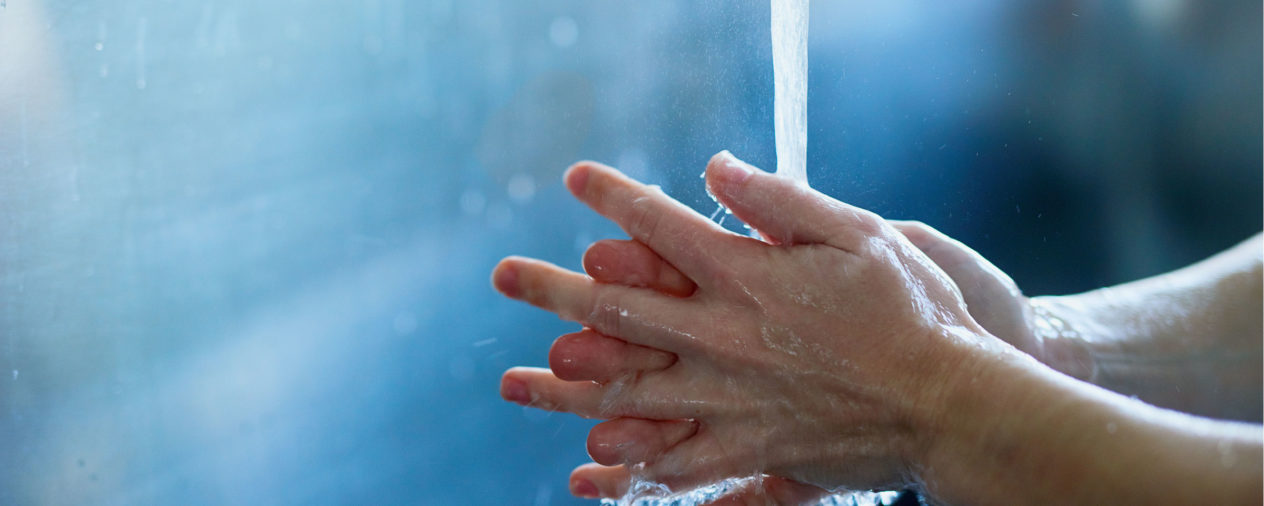Outbreaks of CLABSI and CAUTI in hospitals can be costly in healthcare settings. These types of healthcare associated infections (HAIs) add up to billions of dollars in health care costs each year and can erode community trust in a healthcare facility.
Yet despite the significant costs to hospitals and other healthcare settings, many providers are not covering all of their bases when it comes to CAUTI and CLABSI prevention. Poor hygiene protocols and a lack of accurate data collection related to infections in hospitals continue to contribute to outbreaks each year.
This article gives an overview of CLABSI and CAUTI, the cost of HAIs to hospitals, and how hospitals can implement new solutions like hand hygiene monitoring to prevent costly outbreaks.
What is CLABSI?
CLABSI stands for central line-associated bloodstream infection.
According to the CDC, this is a “serious infection that occurs when germs (usually bacteria or viruses) enter the bloodstream through the central line,” resulting in thousands of deaths each year.
What is CAUTI?
CAUTI stands for catheter-associated urinary tract infection.
According to the CDC, a urinary tract infection (UT) is “an infection involving any part of the urinary system, including urethra, bladder, ureters, and kidney,” and 75% of UTIs acquired in a hospital are associated with a urinary catheter.
What is the return on investment associated with the prevention of CLABSI and CAUTI?
According to an article in the American Journal of Infection Control, “HAIs add substantially to health care costs. The total cost for the 5 major HAIs—central line-associated bloodstream infections (CLABSIs), ventilator-associated pneumonia, surgical site infections, Clostridium difficile infection, and catheter-associated urinary tract infections (CAUTIs)—is roughly $10 billion per year.”
A separate report by R. Douglas Scott II titled “The Direct Medical Costs of Healthcare-Associated Infections in U.S. Hospitals and the Benefits of Prevention” found that “the benefits of prevention range from a low of $5.7 to $6.8 billion (20 percent of infections preventable, CPI for all urban consumers) to a high of $25.0 to $31.5 billion (70 percent of infections preventable, CPI for inpatient hospital services).”
CAUTI and CLABSI prevention
Both CLABSI and CAUTI are considered preventable and have similar prevention guidelines, which include proper insertion and maintenance of catheters and central lines, with an emphasis on a) using a catheter and central line only as long as they are needed and b) ensuring equipment is sanitized and c) proper hand hygiene is followed.
Unfortunately, understanding what best practices are and actually implementing them in a healthcare setting are two separate things. Infection preventionists, chief nurse officers, and other stakeholders at all levels of the organization often lack the data necessary to evaluate compliance and drive change. Yet despite these challenges, many healthcare officials continue to rely on outdated methods and are reluctant to invest in newer technologies, even if it saves costs down the line.
Hand hygiene compliance is a good example of this; although healthcare providers know that hand hygiene is one of the most important factors in preventing infection, studies show that on average, “healthcare providers clean their hands less than half of the times they should,” according to the CDC.
In WHO Guidelines on Hand Hygiene in Health Care: First Global Patient Safety Challenge Clean Care Is Safer Care, the authors found a number of “perceived barriers to adherence with hand hygiene practice recommendations”, including:
- skin irritation caused by hand hygiene agents
- inaccessible hand hygiene supplies
- interference with HCW–patient relationships
- patient needs perceived as a priority over hand hygiene
- wearing of gloves
- forgetfulness
- lack of knowledge of guidelines
- insufficient time for hand hygiene
- high workload and understaffing
- lack of scientific information showing a definitive impact of improved hand hygiene on HCAI rates
Many of these issues could be addressed by making sure that healthcare providers are held accountable for hand hygiene compliance, but this can be hard to track manually. The process of collecting and compiling hand hygiene data is time-intensive, and manual audits are flawed and prone to human error.
Although many healthcare providers are slow to explore new solutions, more recent technology like an electronic hand hygiene monitoring solution can provide a strong return on investment by preventing costly CLABSI and CAUTI outbreaks. Unlike manual audits, an electronic solution provides intelligence about your hospital’s compliance and clinical workflows, which allows you to track compliance history and work more efficiently.
For example, one solution, BioVigil, has been proven to sustain 97%+ hand hygiene compliance, making a notable impact on healthcare-associated infections and patient satisfaction. Outcomes for BioVigil include:
- 45% reduction in CLABSI and CAUTI
- 60% reduction in C. diff rates
- Reduction in overall HAIs by up to 83%
- Increasing patient satisfaction from 35th to 97th percentile
These types of outcomes can make a notable difference in the community’s perception of healthcare settings and save significant healthcare costs. To learn more about hygiene audit compliance and the role it plays in reducing healthcare associated infections, read our whitepaper.

